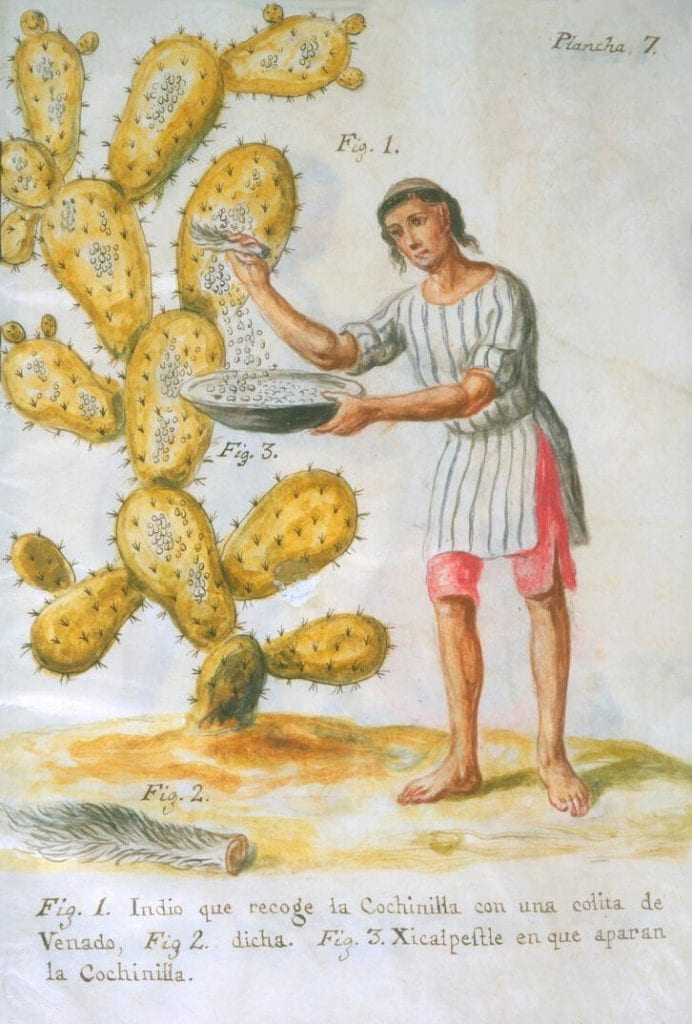Cochineal
How Mexico Made the World See Red
This is the story of a color—one that began as an evolutionary tale, and evolved to shape the course of human history.

Cochineal, a tiny, cactus-dwelling insect that produces a vibrant red pigment, was harvested for thousands of years by Indigenous peoples to produce a dye for their own textiles.
Following the Spanish invasion of the Americas, cochineal ultimately became a globally traded commodity. In Europe, its red became the color of power, tinting the red coats of English soldiers and the Catholic clergy’s capes.
Its commerce transformed the world of textiles, art and trade, but at the expense of the Indigenous knowledge systems and labor that brought it to bear in the first place.
This is a story of how a color changed the world, and how the world exploited a resource.
Cochineal Harvest
This image, titled “Indian Collecting Cochineal with a Deer Tail” is from Memoria sobre la naturaleza, cultivo, y beneficio de la grana, a 1777 essay written by scientist and scholar José Antonio de Alzate y Ramírez detailing cochineal production.